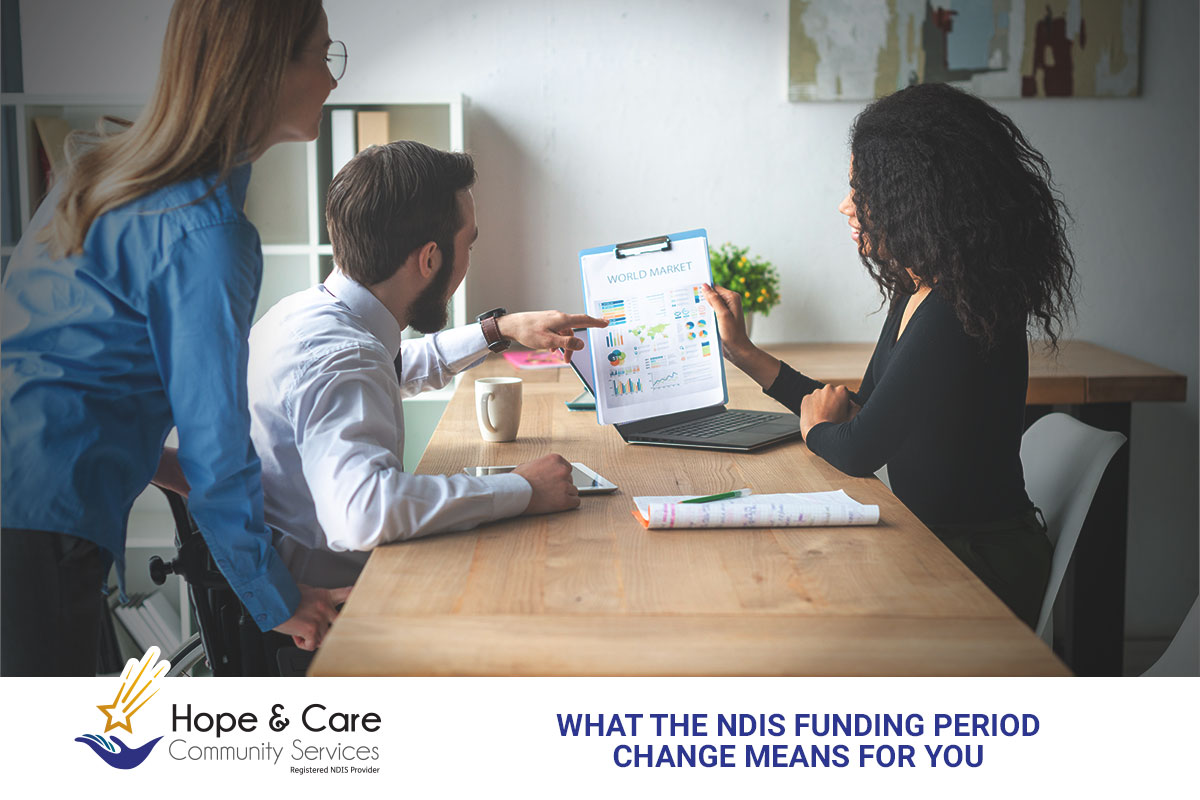
The National Disability Insurance Scheme (NDIS) is making it easier for participants to manage their budgets. From 19 May 2025, the NDIS will implement shorter funding periods for all new and reassessed plans.
Instead of releasing the entire year’s funding at once, the NDIS will distribute funds more gradually typically every three months. This change responds to participant feedback and aims to promote smarter budgeting, better financial control and more consistent access to supports.
In this article, we will explore what these changes mean, how they work and how you can prepare.
Why Is the NDIS Changing Funding Periods?
Previously, participants received all of their funding upfront, usually for a 12-month plan period. While this provided flexibility, many participants faced difficulties such as:
- Overspending early in the plan
- Budgeting challenges across the full year
- Inconsistent access to supports throughout the plan duration
To resolve these issues, the NDIS is introducing shorter, quarterly funding periods. This approach ensures participants receive manageable instalments of their funding throughout the plan’s lifecycle, helping them stay in control of their budgets.
What Does This Mean for NDIS Participants?
The new model gives participants more structure and financial clarity, without affecting their overall entitlements.
Total Funding Remains the Same
You will still receive the full value of your NDIS plan. The change affects when your funds are released, not how much you receive.
Funding Will Be Released in 3-Month Periods
Instead of receiving your entire annual budget at once, you will now receive your funding in three-month cycles. This makes it easier to plan and pace your spending throughout the year.
Unused Funds Roll Over Within the Same Plan
If you do not use all your funding within one period, the unused amount rolls over to the next quarter. However, if you do not use funds before your current plan ends, those funds will not carry over to a new plan. This highlights the importance of smart budgeting.
How Can You Track and Manage Your Budget?
The NDIS has improved tools and platforms to help participants track their funding easily and in real time. You can now see:
- Your total plan funding
- How much you have spent
- When your next funding period starts
Where to Find This Information:
- Your NDIS plan document
- The my NDIS app
- The NDIS participant portal
These tools allow you to monitor your budget, identify overspending or underspending early and plan your supports more effectively.
What Happens If You Run Out of Funds Early?
If your funds run out before the end of a funding period, you would not be able to access more until the next period begins. In this case, it is important to:
- Contact your plan manager or support coordinator
- Discuss your situation with the NDIA
- Review your spending habits and future support needs
If your circumstances have changed such as increased care needs, health issues or a change in living arrangements you can request a plan reassessment to adjust your funding or structure.
How Does This Improve Participant Experience?
This change is part of a larger NDIS strategy to deliver flexible, transparent and responsive support. By releasing funds gradually, the NDIS helps participants:
- Maintain steady access to essential supports
- Avoid financial stress due to early overspending
- Make informed decisions with clearer financial visibility
This structured approach promotes greater independence and ensures participants feel more in control of their NDIS journey.
When Will This Change Affect You?
The change will only apply to new and reassessed NDIS plans starting on or after 19 May 2025. If you are currently on an active plan, nothing changes until your next plan review.
The NDIA will discuss your funding structure with you during your planning meeting. You will have the opportunity to understand how the shorter funding periods will work based on your specific support needs, risks and preferences.
What the NDIS Can and Cannot Fund
To ensure participants use their funds appropriately, the NDIS has introduced clearer definitions of eligible supports. There are now two official lists:
- Supports the NDIS can fund
- Supports the NDIS cannot fund
How to Prepare for the Change
Here are a few tips to prepare for the shift to shorter funding periods:
- Speak with your support coordinator or plan manager about how the changes will affect your budget
- Download the my NDIS app for easy access to plan and budget information
- Review your current spending patterns and adjust if needed
- Understand what the NDIS can and cannot fund to avoid errors or repayments
- Schedule a conversation with the NDIA if you expect changes to your support needs
Conclusion
The move to shorter NDIS funding periods marks a positive step toward better budgeting and improved participant outcomes. By receiving funds at regular intervals, you gain greater control over your spending and reduce the risk of financial strain.
This change shows the NDIS’s commitment to building a system that is sustainable, person-centred and responsive to real participant needs.
How Hope & Care Community Services Can Help
At Hope & Care Community Services (HCCS), we support NDIS participants through every change big or small. As a registered NDIS provider in Queensland, our team is ready to help you navigate these new funding periods with confidence.
We work closely with participants, families and plan managers to ensure every dollar of funding supports your goals, values and independence.
Source:
https://www.ndis.gov.au/news/10721-changes-ndis-funding-periods
https://www.ndis.gov.au/news/10728-message-ceo-about-supporting-you-manage-your-ndis-funding
Want to learn more? Read other articles :
- What types of Supports are funded by the NDIS?
- Who’s Who: The Key Terms of Your NDIS Plan
- Foundational Supports: Building Blocks of NDIS Success
HCCS is a registered NDIS provider. Learn more about our services.
♥ We are available in Brisbane! – Our team is just a call away!
